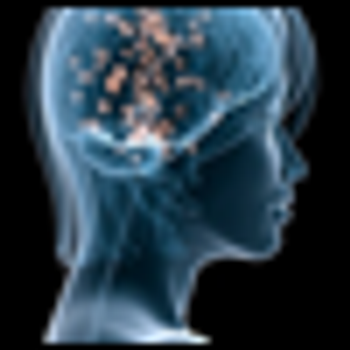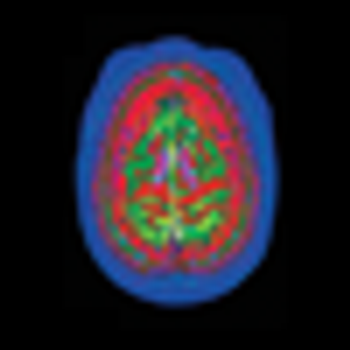
Help in Clinical Decision Making

Help in Clinical Decision Making

Mark Twain observed that "the past may not repeat itself, but it sure does rhyme." An unfortunate rhyme in psychiatric history is the recurrence of fad diagnoses. Childhood Bipolar Disorder is the most dangerous current bubble, with a remarkable forty-fold inflation in just one decade.

Avoid Surprises and Unintended Consequences

Available treatments are so robust that nearly one-third of patients with major depression will achieve full clinical remission with monotherapy.

Diagnostic Dilemmas-Effective Treatment Approaches

The recently posted draft of DSM5 makes a seemingly small suggestion that would profoundly impact how grief is handled by psychiatry. It would allow the diagnosis of Major Depression even if the person is grieving immediately after the loss of a loved one. Many people now considered to be experiencing a variation of normal grief would instead get a mental disorder label.

Parkinson disease (PD) is the second most common neurodegenerative illness in the United States, affecting more than 1 million persons. Disease onset is usually after age 50. In persons older than 70 years, the prevalence is 1.5% to 2.5%.1 While the primary pathology involves degeneration of dopaminergic neurons in the substantia nigra, circuits important in emotion and cognition-such as the serotonergic, adrenergic, cholinergic, and frontal dopaminergic pathways-are also variably disrupted.

Writer Jonah Lehrer caused quite a stir with his recent article in the New York Times Magazine, with the unfortunate title, “Depression’s Upside.” I have a detailed rejoinder to this misleading article posted on the Psychcentral website.

Arlington, VA, March 2 (compiled from AP reports)-Officials at the American Psychiatric Association (APA) confirmed today that their national headquarters had been taken over by “very, very large English and literature teachers,” according to a spokesperson for APA President, Dr Alan Schatzberg. Schatzberg himself was unavailable for comment and was reported to be in seclusion “…brushing up his Shakespeare.”

Quick-which screening test or instrument has greater specificity for the target condition: the PSA (prostate specific antigen) test for prostate cancer, or the BSDS (Bipolar Spectrum Diagnostic Scale), for bipolar disorders?

Another lifetime ago-just after leaving residency-I took a job as a psychiatric consultant at a large, university mental health center. Had I known the poisoned politics of the place, I would have headed for someplace safe-like, say, Afghanistan.

“The exclusion of symptoms judged better accounted for by Bereavement is removed because evidence does not support separation [or] loss of loved one from other stressors.”1

This article reviews the differences between dementia types and future directions.

Although a large body of research has documented the risk factors for and negative effects of depression in mothers, little is known about depression in expectant or new fathers.

During my medical training in the early 1980s, I attended a Grand Rounds on health care reform. Sleep-deprived physicians-in-training are easily conditioned to snooze upright in their auditorium seats, and economics is not an interest of choice for me, but when the speaker told us that there would be no solution to rising health care costs except to fracture the bond between patient and doctor, I found myself engaging in nightmarish fantasies that in subsequent decades have come true.

In 2 previous editorials-“The ‘McDonaldization’ of Psychiatry” and “Doctor, Are You ‘Drugging’ or Medicating Your Patients?”-I focused on some serious problems in current psychiatric practice and on various shortcomings in our treatments. In the third “panel” of this editorial triptych, I want to take note of the considerable good that psychiatric treatment may bring to those who suffer with devastating illnesses.

In his Putting Research Into Practice column, “Practical Implications of a Study on Treating Chronic Insomnia," (Psychiatric Times, Dec 2009, Vol XXVI, No 12, p 8) Dr Rajnish Mago described a study of cognitive-behavioral therapy (CBT) and hypnotics in 160 subjects with chronic insomnia, 15% with a comorbid psychiatric diagnosis.

Until the early 19th century, psychiatry and religion were closely connected. Religious institutions were responsible for the care of the mentally ill. A major change occurred when Charcot1 and his pupil Freud2 associated religion with hysteria and neurosis. This created a divide between religion and mental health care, which has continued until recently. Psychiatry has a long tradition of dismissing and attacking religious experience. Religion has often been seen by mental health professionals in Western societies as irrational, outdated, and dependency forming and has been viewed to result in emotional instability.3

What do we know about circadian rhythms and melatonin? And what further lessons do we need about circadian rhythms, light exposure, and melatonin to help our patients with disturbed sleep/wake cycles?

After formulating and signing “Melancholia: A Declaration of Independence,” an international cadre of psychiatrists recently launched a campaign to have the upcoming DSM-V recognize melancholia as a distinct syndrome rather than as a specifier for the mood disorders of major depression and bipolar disorder.

For both depression and anxiety disorders in youths, there is increasing evidence of clinical benefit from cognitive-behavioral therapy (CBT).

Obesity has emerged as a significant threat to public health throughout the developed world. The World Health Organization defines overweight as a body mass index of 25.0 to 29.9 kg/m2 and obesity as a BMI of 30.0 kg/m2 or greater.1 Nearly two-thirds of Americans are overweight or obese according to these criteria.2 Numerous health problems, including diabetes, cardiovascular disease, arthritis, and cancer, are associated with obesity. In addition, overweight and obese persons are more likely than their normal-weight peers to have a variety of psychiatric disorders.

New compounds and novel applications for established products were evaluated in many of the clinical trials reported at the recent 49th annual NIMH-sponsored New Clinical Drugs Evaluation Unit meeting.

Low levels of 3-methoxy-4-hydroxyphenylglycol (MHPG) in patients with major depressive disorder (MDD) or bipolar depression were shown to be associated with increased risk of suicide attempts. Hanga Galfalvy, PhD, assistant professor of clinical neurobiology at Columbia University and the New York State Psychiatric Institute, New York, and her colleagues found that patients with the lowest levels of MHPG at baseline were more likely to commit highly lethal suicidal acts.

All pregnant women should be screened for bipolar disorder, according to a recent article by Verinder Sharma, MB, BS, professor of psychiatry and obstetrics and gynecology at the University of Western Ontario, London, Ontario, and colleagues. This is because bipolar depression may be misdiagnosed as major depressive disorder in the postpartum period, resulting in delays in appropriate treatment.